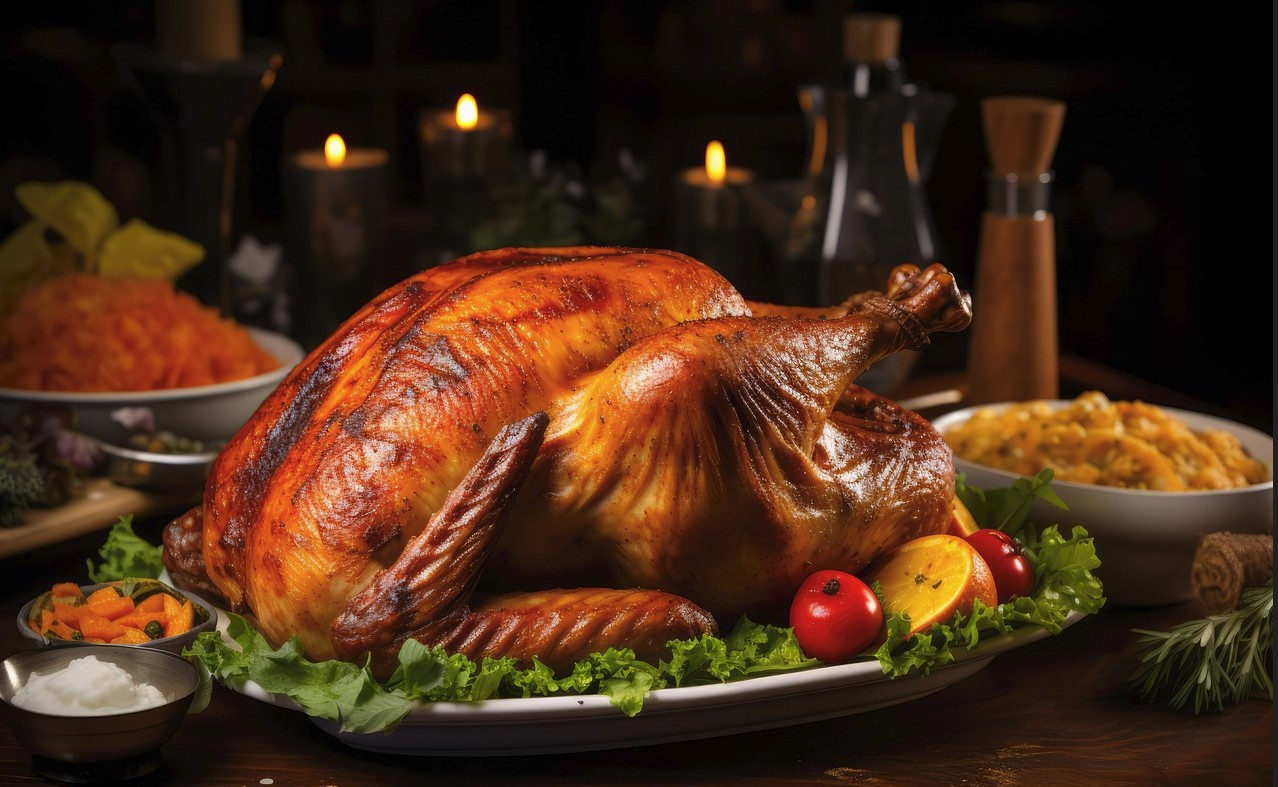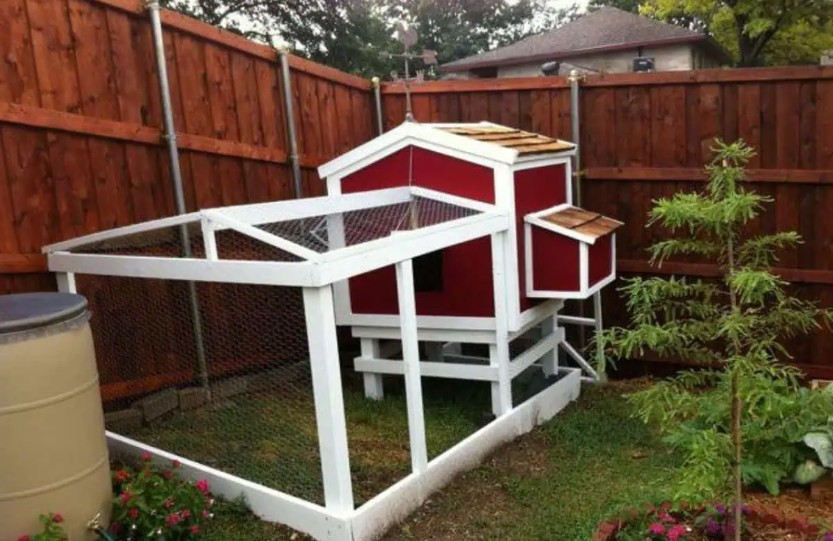Raising chickens starts with a smart, sturdy coop. The benefits go beyond just fresh eggs—think healthier hens, fewer pests, and easier daily care. A well-designed chicken coop keeps your birds happy and safe, even during tough weather or sneaky predators.
Building a chicken coop seems like a big job, but clear plans break it down into steps that anyone can follow. With the right details, you’ll save time, money, and avoid the common mistakes that frustrate first-time builders (I’ve learned a few lessons the hard way).
This guide shares everything you need to know, from the first sketch to the last nail. You’ll pick up tips for picking the best location, choosing the right materials, and setting up a space that’s both clean and comfortable. As you follow along, you’ll see how detailed instructions make the project simpler and much more rewarding—whether you want six hens for your backyard or a larger flock for your family.

Planning Your Chicken Coop Project
Every strong chicken coop starts with a plan. Skip this step, and you might find yourself with frustrated neighbors (or the city knocking on your door)—not to mention a coop that leaves your birds exposed to rain or raccoons. Before anyone swings a hammer, cover the basics: rules, placement, and enough space for your birds to live well.
Checking Local Laws and Zoning Regulations
Before you pick up a single board, look up the local rules. Not every neighborhood or town lets people keep chickens, and the limits can be strict. Some places allow just a handful of hens, but others say no birds at all. (I learned this the hard way when my own subdivision banned chickens outright.)
Here’s what to check:
- Permits: Find out if you need a permit. Some cities require paperwork and a small fee.
- Setback requirements: These rules tell you how far your coop needs to be from property lines, houses, or streets.
- Rooster bans and noise rules: Many towns say no to roosters because of the noise. Double-check before you plan to add a proud male to your flock.
- Neighborhood or HOA restrictions: Homeowners’ associations often have their own rules. Sometimes they’re even stricter than city codes.
- Limit on flock size: Rules may cap the number of birds you can keep.
Checking ahead saves you from headaches, fines, or the heartbreak of moving your birds. Most city planning offices list these rules online, so a quick web search or phone call goes a long way.

Choosing the Right Location for Your Chicken Coop
A bad location can ruin even the best chicken coop design. You want a spot that’s dry, shielded, and close enough for daily care (nobody wants to trudge across a swampy yard in the rain).
Consider these tips when picking your site:
- Drainage matters: Higher ground keeps your coop floor dry, especially after storms.
- Sun and shade: Morning sun helps dry out dew and keeps hens active, but they need shade in the heat of summer.
- Wind protection: Position your coop so larger trees, shrubs, or a fence block harsh winter winds.
- Predator barriers: Stay away from wooded edges or places where raccoons and foxes might hide. Solid fencing gives an extra layer of safety.
- Convenience: The closer the coop is to your home, the easier it is to collect eggs and keep an eye on the birds.
- Access to utilities: If you plan to run electricity for lights or heated waterers, keep the location practical.
Don’t rush this part. Walk your yard after a rain, watch where the shadows fall, and think about your daily routine.
Determining Chicken Coop Size and Space Requirements
Chickens need room to scratch, dust-bathe, and stretch their wings. Crammed coops breed stress, bad smells, and trouble (think feather picking and sick birds).
General spacing guidelines:
- Inside the coop: At least 3–4 square feet per bird for standard breeds. Bantams (the small, fancy types) can get by with a bit less.
- Outdoor run: 8–10 square feet per bird in the chicken run is a solid baseline. More is always better if you have the space.
- Nesting boxes: One box for every 3–4 hens is plenty—they take turns anyway.
- Roosting bars: Allow 8–12 inches of space per bird on the perch at night.
If you think you might add more hens down the road, size the coop larger from the start. It’s much easier (and cheaper) to build in extra room now than to add on later.
Quick checklist:
- More space = healthier hens and easier cleaning
- Plan for at least two access doors (one for you, one for the birds)
- Leave enough headroom so you can collect eggs and clean without stooping
A little planning on the front end pays off all year long, with happy birds and a setup that works for your family and your yard.
Essential Features of a Functional Chicken Coop
A chicken coop isn’t just a shelter, it’s your flock’s home base and their best line of defense against sickness and danger. Good plans mean nothing if basic features are missing or overlooked. Healthy chickens need help from you, whether it’s in the dead of winter or during a hot spell in July. Below, I’ll break down the features every coop should have so your chickens stay safe, healthy, and keep laying strong.
Ventilation, Insulation, and Lighting Needs
Fresh air and light are as important as feed and water. Poor airflow means moisture and ammonia build up fast. Both will burn your chickens’ lungs and make disease spread like wildfire. But don’t swing the other way and let cold drafts whip through the coop; that just leads to frozen combs and stressed-out hens.
Think about these essentials as you build:
- Ventilation: Let air in, but not wind. Place small vents near the roof, well above where your birds perch at night. I like simple hardware cloth-covered holes, or adjustable windows that can be cracked open. This whisks away moisture and smells but keeps warmth inside. In summer, you can open up wider to let out heat.
- Insulation: Chickens can take the cold, but wild swings in temperature wear them down. Basic foam boards or packed straw can work wonders inside the walls. Focus on the north and west sides, where winter winds blow hardest. I tried skimping here once and paid for it with frozen waterers all season.
- Lighting: Chickens rely on daylight to lay eggs. Short, dark days throw off their cycles. Set up your coop for max natural light—think big windows that face east or south. In winter, add a simple LED bulb on a timer (set for 14–16 hours total light). I find this keeps my hens laying, even when the weather turns dark.

Predator-Proofing Your Coop
If there’s a way in, a raccoon or fox will find it. Even if you think you’ve outsmarted the wildlife, a loose latch or small gap is all it takes for trouble to show up.
What works best for stopping predators:
- Sturdy hardware cloth (not chicken wire): Chicken wire keeps chickens in but won’t keep clever paws or teeth out. Use half-inch hardware cloth over all openings (windows, vents, the run fence). Staple it down tight and bury at least 12 inches underground around the run’s edge to stop digging.
- Strong doors and locks: Predators learn fast. Skip simple hook-and-eye latches; use spring-loaded or locking hasps that take nimble fingers to open. Heavy doors with tight seams leave no wiggle room for weasels or rats.
- Solid floors or buried wire: If you build a floorless coop, dig a perimeter trench and lay hardware cloth so nothing can tunnel under. Got a solid floor? Make sure there are no holes or rot for rodents to slip through.
- Roof and overhangs: Hawks and owls hunt from above. Cover your run with netting or wire. Add overhangs at the roof’s edge so nothing can climb up and leap inside (I’ve watched more than one raccoon try).
Predator-proofing can feel like overkill until you wake up to a scene you never wanted to see. For me, a few extra hours up front beats heartbreak later.
Flooring, Nesting Boxes, and Roosts
Inside the coop, chickens need basics: a floor that’s easy to clean, safe places to lay, and sturdy bars to sleep on.
Here’s what’s worked for me and why:
- Flooring: For years, I used untreated plywood covered with a thick layer of pine shavings. Some folks swear by linoleum for quick cleaning (it protects wood from dampness). Dirt floors can work, but they invite rodents unless paired with buried wire. Sloped floors and drains help water run off, especially if you hose out the coop.
- Nesting boxes: Hens want a dark, quiet spot to lay. Boxes should measure around 12x12x12 inches and sit 18–24 inches off the ground. I mount mine on an outside wall for easy egg-collecting access—just lift a hinged lid. Add dry straw and check for dampness after storms.
- Roosts: Chickens sleep up off the ground, away from drafts and pests. I use 2×4 inch boards (laid flat, not edgewise), sanded smooth. This lets hens tuck their toes under at night, keeping them warm and safe. Space the bars 12–18 inches apart and place them higher than the nest boxes, so birds don’t sleep where they lay eggs.
A functional chicken coop is about giving your birds what they need every night and day. With these features, you can avoid most headaches before they even start. Chicken-keeping gets easier when you work smarter at the build stage—your flock will thank you.

Step-By-Step Chicken Coop Construction Instructions
Building a chicken coop with good instructions is a lot like following a solid recipe: you get clear steps, avoid nasty surprises, and end up with something you’re proud to show off. I’ve found that when plans are written for real people (not carpentry pros), the build goes faster and there’s much less second-guessing. Below, I’ll walk through why this proven design works for backyard chicken keepers and what you’ll need before grabbing your first board.
Why This Plan Works
Beginner-Friendly – Clear, Simple Instructions
This coop plan breaks it down without any fluff. Every step is laid out with plain language and matching diagrams. Even if you’re new to building, the steps feel logical and you’re never left guessing what tool or board comes next. I’ve built worse—trust me, nothing is more frustrating than vague instructions when you’re knee-deep in lumber.
Functional Design – Everything Chickens Need
You’re not just building a box. This design covers all the bases: a secure nesting box on one end (egg gathering made easy and clean), a pop door the hens use to get in and out, and screened windows for fresh air. Inside, there’s a sensible place for roosting and room for a feeder and waterer. The layout keeps the mess outside and the hens comfortable inside.
Efficient Use of Space – Custom Fit for Your Yard
One of the smartest tweaks is fitting the design to the spot you have. We ran into a tight corner in our yard, so I measured twice and adjusted the frame to slip right in. Swapping the main door for a bi-fold made it super easy to reach in with both hands, even in a small space. It saves your back when it’s time to clean or collect eggs.
Aesthetic Appeal – Looks Good from the Porch
No reason your coop has to look shabby. We gave ours a few coats of Martha Stewart Barn Red and trimmed it with a white picket edge to match the fence. It blends into the backyard rather than sticking out like a shed. Visitors ask about the chickens, not the “structure in the corner” (that’s a win in my book).
Weather Protection – Built to Last
The shingled roof does more than keep the rain off. It holds up under snow and blocks harsh summer sun. Elevating the base lets water run under the coop without rotting the floor, and it gives chickens a dry spot to stand after a storm. It’s that careful attention to weather that keeps the flock healthy year-round.

What You Will Need
Before starting, collect every piece you’ll use. It saves headaches during the build. Here’s a list, based on a medium coop for 4-6 hens, but you can adjust sizes to fit your needs.
Materials:
- Lumber (2x4s and 4x4s for the frame, plus extras for trim—quantity depends on your size)
- Plywood sheets (for the walls, floor, and roof panels)
- Nails and screws (both general and for outdoor use)
- Hinges (for all doors and access windows)
- Chicken wire (or, better yet, half-inch hardware cloth for the run and window covers)
- Roof shingles (choose colors to match your house, if you like)
- Exterior paint or stain (plus primer if you want it to last longer)
- Decorative trim (optional, but boosts curb appeal)
Tools:
- Saw (circular, miter, or hand saw—it doesn’t have to be fancy)
- Power drill and driver bits
- Hammer
- Measuring tape (a good metal one—soft ones stretch and mess up your cuts)
- Level (a 2-foot level works great for double-checking)
- Square (for corners and frame alignment)
- Staple gun (for attaching wire)
- Ladder (for shingling the roof or reaching tall spots)
- Paintbrushes and rollers
Take your time sorting everything ahead of your build. Having every board, screw, and hinge right at hand saves your nerves and keeps momentum rolling when you’re in the groove. This plan keeps the process simple and organized, which means you just follow the steps and watch the coop come together—no guesswork, no wasted effort.

Step 1: Preparing Materials
Starting a chicken coop build gets real once you’re sorting boards and taking your first cuts. This is the moment where the project shifts from idea to reality—nothing like the buzz of a new table saw on fresh lumber to get you going. Prepping materials upfront lays the groundwork for a smooth build. If you’ve ever made an Ikea bookshelf, you know how a missing screw or board can grind progress to a halt. With a coop, the stakes are higher (and so is the mess if you have to run back to the store halfway through).
Here’s how I approached the material prep step by step:
Sorting and Inspecting Lumber
Before making that first cut, I stack out all the 2x4s and plywood to check for warps, knots, or splits. Smooth lumber makes everything easier—there’s a real “measure twice, cut once” lesson here. Spend a few minutes lining up boards along the garage or backyard fence so it’s easy to spot bent or damaged pieces. Swap out any that look like trouble now instead of wrestling with them during framing.
- Pro tip: If you ordered your wood for delivery, check sizes and count every board against your supply list. Vendors mix up orders more often than you’d think.
Marking and Measuring Pieces
A clear plan means you can pre-mark most cuts in one go. I measure out all frame pieces, marking each board with a pencil—label both ends if you want easy tracking. Keep a sturdy measuring tape on hand and double-check big pieces, especially wall panels and roof sheets.
- Square and level tools keep you honest. Even a little slant in one board throws your whole frame off square. Using a carpenter’s square, I mark right angles before cutting, which pays off when all the walls slot together later.
Cutting Boards for the Frame and Walls
This is the really satisfying part. I set up the table saw on a pair of sawhorses, then line up the boards based on my cut list from the plans. For the coop frame, you’ll want clean, straight cuts—these pieces act like the skeleton for everything that comes next. I usually start with rough cuts, then trim each to final length so all my wall and floor pieces fit snug.
- Cut and set aside the frame boards first. Next, do the wall panels and floor substrate.
- Plywood sheets can get unwieldy. Lay out your cuts ahead of time with a chalk line if you have one. This helps reduce waste and keeps edges straight.
The work goes quick with a sharp blade and a steady rhythm. Don’t overthink it. If you’re new to saws, take a breath before each cut, and let the tool do the job. The wood should mark the pace, not the other way around.

Gathering Hardware and Fasteners
A pile of cut boards is useless if you’re always digging for nails or running to the shed for another screw. I like to empty all boxes of nails, hinges, and screws into trays or containers before starting construction itself. Group by size and type so you can grab what you need without thinking. Trust me, when you’re balancing a heavy wall panel with one hand, you don’t want to hunt around for a stray box of decking screws.
- Extras matter. Get more screws and hardware than you think you’ll need. Leftovers store well, and running short gets old fast.
- Keep hinges and latches handy. Doors, access panels, and nesting box lids need their own pile.
Setting Up Your Workspace
Anywhere with enough room and a flat, level surface is fair game for this job. For me, the driveway works just fine: easy cleanup and space to spread out. Keep power tools close, extension cords clear of walkways, and a trash can nearby for offcuts.
If you’ve got help (a curious neighbor or your kids), set them up with sanding blocks or ask them to sort hardware. The more hands, the faster the tedious parts go.
Prepping materials right the first time means the rest of your chicken coop build feels organized and controlled. Nothing fancy—just common sense and steady progress. Next comes the part where the boards actually start to look like a coop, but it all starts here with a good setup.

Step 2: Assembling the Frame
Building the chicken coop frame is where the project starts feeling real. The boards you’ve measured and cut finally come together to form the basic shape of your coop. For most backyard builders, this step is surprisingly satisfying—it goes faster than you might expect, even if this is your first major wood project. Take it slow and double-check each joint, since the frame is the foundation that holds everything else up.
Laying Out the Base
Start by setting up the bottom frame on a flat surface. Arrange your base boards (usually 2x4s or 4x4s) in a rectangle, matching your planned coop size. Check that everything lines up flush and square at the corners—it’s worth using a carpenter’s square here. If it looks a little off, tap boards gently into position until every angle is spot on.
- Pro tip: Measure the diagonals from corner to corner. If both measurements match, your base is square. If not, keep adjusting until they do.
Once you’re happy, tack the corners together with wood screws or nails. Don’t worry about strength just yet; you’ll reinforce it all soon. This quick tack lets you move and readjust boards without wrestling stubborn joints.
Creating the Uprights and Side Frames
With the base down, it’s time for the upright posts and side frames. Stand each vertical post at the corners; this is where another set of hands can help. Secure these posts to the base using wood screws, making sure they’re perfectly vertical (a level is your best friend here).
After the corner posts are in, attach the top frame pieces. These run parallel to your base, connecting the tops of each upright. Think of it like a giant rectangular box—your sides and roof will attach to this skeleton. For extra stability, add intermediate vertical supports along longer walls, spaced evenly.
Building the side frames as single units is a smart move. Some people pre-assemble the sides on the ground, then tip them up and attach them to the base. This method helps keep everything square and makes the frame sturdier from the start.
Reinforcing for Rigidity
A coop frame needs to stand up to wind, rain, and the occasional push from kids or curious animals. Reinforce key joints with angle braces or metal brackets, especially at corners and where horizontal boards meet uprights. I use deck screws over nails for most of this—screws bite stronger and stop the frame from wiggling or coming loose down the line.
Take a minute to eyeball the structure from several angles. Look to see if it leans or twists. If anything seems weak, add a temporary brace until you’re done adding the walls. The time you spend now saves you from headaches later when siding and roofing go on.
Double-Checking Measurements
With the structure tacked together, check that all your wall heights and lengths are correct. Set your floor panels on top to make sure they fit snug with no big gaps. If anything seems off—boards out of line, one side taller than the other—now is the time to tweak it.
Mistakes in this step echo through every part of the build. But you’ll find it’s not as intimidating once you start. Most errors are easy fixes: unscrew, adjust, and retighten. If you need to trim the odd board, a hand saw works fine.
Tips for Easier Assembly
From my own experience, these simple habits make framing smoother:
- Lay each piece on flat ground before lifting into place.
- Mark all screw positions with a pencil (prevents later split wood).
- Tighten corner joints but don’t overdrive screws—splitting lumber is a real threat.
- Lay out all tools and hardware nearby; climbing up and down ladders eats up precious time.
- If you’re flying solo, clamp or tape pieces in place while you work.
By the end of this stage, you’ll see the beginnings of an honest-to-goodness chicken coop. Sides up, frame solid, and the outline clear. With these steps, even first-time builders can get sturdy results without headaches or wonky walls.

Step 3: Adding the Roof
Once your frame is sturdy and square, the roof is the part that makes everything start to feel like a real chicken coop. Covering your frame and hearing the rain bounce off for the first time gives such a sense of progress (and relief). A good roof does more than finish the look—it protects against storms, wind, and sneaky predators. When I attached my first roof panel, the coop honestly looked more like a pet crate than a home for hens, but things shape up quickly as you go along.
Choosing a Roof Style
Picking the right roof type will make your coop safer and easier to maintain. Each style has its perks, so let your weather and yard decide for you.
- Sloped (shed) roof: Easiest for new builders and sheds water fast. Fewer cuts and simple angles.
- Gable roof: Classic “house” look, great for heavy snow. Gives your chickens extra headroom (and your hens will appreciate the airflow).
- Flat roof: Fastest install, but beware of puddles—some water always finds its way in unless you add a slight tilt.
I prefer the simple sloped roof for most backyard setups: it’s easy to build, lets snow and rain slide right off, and keeps costs down.
Measuring and Cutting Roof Panels
Roof panels need to hang past the coop walls a few inches on each side. Those extra inches are what keep water from running down the siding and soaking into wood. Before cutting, lay out your plywood or OSB sheets on flat ground and double-check the needed size.
Tips for a tight fit:
- Measure the coop top length and width, then add 2–4 inches for overhang.
- Mark your cut lines on the panel with a pencil and straight edge.
- Use a circular saw or hand saw—just move slow and steady to get clean cuts.
For a gable roof, you’ll cut a pair of rectangles for each side. Use a square to mark steep angles so everything lines up when you lift the panels into place.

Framing the Roof Structure
The underlying frame is what really holds your roof strong. Most folks use 2x4s or 2x6s, nailed in place at the top of the walls. For a sloped or shed roof, angle the supports from the back wall higher than the front, giving your runoff its needed downhill path.
Step-by-step roof framing:
- Cut your rafters to the right length—these are the angled boards that run from front to back (or both sides for gables).
- Space rafters 18–24 inches apart for strength.
- Secure each rafter with long screws or hurricane brackets at connection points.
- Double-check for level: uneven rafters lead to bowed or wavy roof panels (and leaks).
If you can, preassemble the roof frame on the ground. Then hoist it onto the coop and screw it in place—this saves your arms and keeps lines tight.
Attaching the Roof Panels
This is the satisfying part: once the framing is in, you set the panels and secure them. I lay out the panels so the long side hangs off both the front and back, giving a good drip edge.
Here’s how to do it right:
- Rest panel edges flush with the rafter bottoms.
- Secure with outdoor-rated screws (or nails) about every 8–12 inches. Screws grip better in wind.
- Seal seams with roofing tar or silicone caulk if your area gets serious rain.
- Double-check for gaps—small cracks let in squirrels, rain, or wasps.
Hold back on fully tightening the first screws until the whole roof sits where you want it. Lightly set each panel, then tweak the fit before locking everything down.
Installing Shingles or Metal Roofing
Bare wood won’t last. Finish your roof with shingles, metal, or even clear plastic panels if you want more daylight.
Popular options:
- Asphalt shingles: Affordable, classic, blocks sun and rain. Start at the bottom and work up, overlapping rows for water tightness.
- Metal panels: Fast install, super durable, and great for snowy spots.
- Polycarbonate panels: Let in natural light but still block the elements.
Nail or screw down the edge strips or ridge cap last, making sure every seam is weather-tight. In windy areas, use extra fasteners along the edges—loose shingles become dangerous projectiles in a bad storm.
Adding Soffit Vents and Overhangs
A coop roof needs airflow. I like to cut small vents into the soffit—the underside of your overhang. Cover vents with half-inch hardware cloth to keep pests out but let air move.
Don’t skip decent overhangs on all sides, at least 3–4 inches if you can fit them. Overhangs shed rain and block summer sun, making a real difference during downpours. I’ve watched fresh paint bubble up after a forgotten overhang let water pour right down a wall.
Quick tip: Paint or seal wood edges before installing the panels. Wet roof wood swells and peels fast if left untreated.
Making the Roof Safe and Easy to Maintain
The last step is making sure you can check your roof later—repairs and cleaning will always pop up over the years.
- Leave room to reach up and clean leaves or snow off.
- Check fasteners every few months; birds and weather wiggle things loose.
- If you build a hinged roof (for small coops), use heavy-duty hinges and a latch to keep it storm-tight.
A solid roof is your first line of defense against weather, predators, and bad moods brought on by wet hens. Once the panels are in place, you’ll see your coop go from a simple frame to something that really looks (and feels) like a finished home for your flock.

Step 4 Installing the Nesting Box
With the roof on and your coop starting to look like a finished home, focus shifts to the nesting box. This is one of those features that makes daily life easier for both you and your hens. A well-placed nesting box means quick egg collection, cleaner eggs, and a calmer flock. My first coop had a dark corner for laying and, predictably, my hens found their way into flower pots on the porch instead. Lesson learned: give your birds a spot they’ll want to use, and you’ll save yourself a daily scavenger hunt.
Planning the Placement
Where you put the nesting box makes a real difference. Hens like quiet, dark spots where they feel hidden and secure. Place boxes away from direct drafts but not up against the dampest corners of the coop.
Key placement tips:
- Attach boxes 18–24 inches above floor level to keep eggs off the ground (but still easy to reach).
- Choose a wall with outside access if possible. A hinged lid or swinging door saves time when gathering eggs and keeps your shoes out of chicken mess.
- Keep it away from roosts so birds don’t sleep in the boxes (nobody wants poopy eggs).
- Aim for dappled light, not harsh sun. A bit of natural light is fine but too much can make hens feel exposed.
I usually install boxes along a side wall, but many plans put them on the back, opening outward for fast, mud-free egg runs (very convenient on cold mornings).
Building the Nesting Box
Ready-made plastic or metal boxes are out there, but wood boxes are simple and blend with your coop. Standard size is 12x12x12 inches—roomy for big hens, cozy for smaller birds.
Steps for building and attaching:
- Cut panels for each box: Front, back, sides, base, and lid. Use 1/2-inch plywood or scrap lumber.
- Assemble the pieces: Screw or nail the sides and base together, making sure joints are tight. Attach the back panel last so you can square it as you go.
- Make a low front lip: A 4-inch board across the front keeps shavings and eggs from rolling out.
- Secure the box to coop wall framing: Use screws through the back panel into studs (nothing fancy, just solid connection).
- Add a sloped lid: This stops hens from roosting or piling on top (it keeps things cleaner).
- Weatherproof outside edges: If your box sticks out from the main wall, seal seams with exterior caulk and give it a coat of outdoor paint or stain.
Optional: Line the inside with vinyl or a scrap of linoleum for easier cleaning.

Bedding and Comfort
Good bedding makes hens happy and your job easier. Dry, soft materials cushion eggs and keep the nest warm. I stick with pine shavings or straw—both work well and are easy to replace. Some folks use shredded paper, but it can get damp and clump up if your coop leaks.
Tips for bedding:
- Keep it dry and 2–3 inches deep.
- Change bedding weekly, or sooner if it gets messy.
- Add a sprinkle of food-grade diatomaceous earth to deter mites.
- Avoid cedar chips (they smell nice to us, but can irritate chickens’ lungs).
A nesting pad or rubber mat under the bedding saves cracked eggs if your hens are high jumpers (mine once tried to roost in the box and kicked all the straw out, so a mat saved me from egg clean-up duty).
Making Egg Collection Easy
Daily egg gathering shouldn’t feel like a chore. Thoughtful design pays off each morning.
What helps most:
- Install a hinged lid with a secure latch; raccoons are surprisingly clever, so use a sturdy lock.
- Keep lid edges smooth (no splinters) and check after heavy rain or freezing weather—the wood can swell and stick.
- Leave enough space behind the coop so you can crouch or reach comfortably.
- If your flock is shy, a soft curtain (even a folded feed sack) over the box front gives extra privacy and encourages hens to lay inside.
Final Nesting Box Checks
By this stage, you’ve likely noticed how confident your hens are feeling as their new home comes together. Before moving on, check:
- Lids open and close easily
- The boxes are clean and dry
- Attachment points feel solid—no wobbles or gaps
Installing the nesting box right means easier egg collection, less flock stress, and fewer surprises for you. Build a spot your chickens want to use, and their natural routines will do the rest.

Step 5: Adding the Pop Door and Windows
At this stage, your coop has its bones and essentials, but it won’t do much good if you or your chickens can’t get in or out. Installing the pop door, people door, and windows turns your structure from a simple box into a true home for your flock. The details here matter for safety, weather, and day-to-day chicken care. If you’re not aware, “pop door” is just a cozy name for the little entrance your chickens use. With the frame up and the roof overhead, now is the time to make these cutouts and finish off the points of access and ventilation.
Installing the Pop Door
The pop door sets daily routines for your hens. They’ll head out in the morning for sunshine and scratching, then tuck back in at dusk. Placement is key—I like it on a sheltered side of the coop, not facing straight into the wind. Start by marking the pop door opening on your coop wall just above ground level. Make sure it’s large enough for your biggest hen—around 10 inches wide and 12 inches tall fits most backyard chickens.
Steps I’ve followed that make pop door installs smooth:
- Draw your outline using a level and carpenter’s square.
- Drill pilot holes at the corners for your saw blade.
- Use a jigsaw or handsaw to cut out the hole, moving slow to stay on your lines.
- Sand the edges to prevent splinters.
- Attach sturdy hinges to one side of the pop door panel. I use stainless steel to avoid rust.
- Install a latch on the opposite side. For extra predator safety, I chose a lockable latch (after losing a few eggs to raccoons).
- For automatic pop doors (which are a luxury, not a must), mount the motor assembly above the door and test the opening and closing with the flock nearby—the hens will adapt quickly.
Once the pop door is on, watch how fast the hens figure it out. It’s like a morning stampede—hilarious and a little chaotic.
Cutting and Fitting the People Door
With the coop close to a side fence, space-saving becomes the name of the game. We built a bi-fold door for easy access. Standard doors swing wide and eat up room, but a bi-fold folds back neatly, even in cramped spaces.
Here’s my take on cutting and fitting the door:
- Measure twice before marking the outline for your people door; I aim for a minimum of 24 inches wide so cleaning and egg gathering is comfortable.
- Mark the door outline with your level and square.
- Drill starter holes at the corners (they make the saw work easier).
- Cut the opening as one piece, then slice vertically down the middle and add a horizontal split if building a classic bi-fold.
- Sand all exposed edges.
- Attach hinges at each fold and along the outer edge where the door meets the coop. Use strong, weatherproof hinges so the door stays solid.
- Secure a latch at a comfortable height. I prefer a slide bolt or a keyed lock to keep out curious critters and kids alike.
After mounting, test the bi-fold action a few times. You want it to swing back smoothly but not sag. For tight setups against a fence, this approach saves your back and keeps things tidy on egg collection and cleaning days.
Adding and Securing Windows
Windows give your chickens fresh air and daylight. The right design keeps the coop nice and bright, and makes it look friendlier too. Sizing the window is a bit of trial and error (speaking from experience)—you want plenty of light but not massive drafts. Two or three small windows is usually perfect for moderate-sized coops.
Here’s a quick checklist for window installation:
- Mark window locations high on the wall to avoid drafts at roost height.
- Trace outlines, drill pilot holes, and use a jigsaw to cut the opening.
- Sand the inside edges so nothing catches feathers or fingers.
- Build simple frames from 1x2s and fit hardware cloth to each window—this keeps out raccoons, rats, and wasps.
- Mount the frames with screws. I like to put screens on the inside and swinging, plexiglass panels or shutters on the outside.
- For ease, use one large prop for windows that open. It’s quicker to lift and set, especially if you’re in a hurry or it’s raining.
- Add latches or hooks so the window panels stay put when closed, but can be fastened open for airflow.
During installation, test each window for a snug fit. Block any gaps with weather stripping or caulk if needed.

Tips from Hands-On Building
A couple personal notes here: The windows were more trial and error than anything else. After a couple of not-so-level frames, I slowed down and checked each cut twice. If you’re ever unsure, cut smaller first—you can always widen the opening later. For the doors, pre-mount the hardware before installation; handling a heavy door while aligning hinges in place is no fun solo.
For a cleaner look and longer-lasting doors and windows:
- Paint or stain every cut edge before mounting.
- Check hardware every few months—chickens and weather loosen screws over time.
- If you want quieter mornings, make tight-fitting doors and use felt or rubber for a soft close.
Good doors and windows aren’t just about looks. They set the tone for easy care, happy hens, and a coop that holds up across seasons. With this step finished, your birds will have the freedom to roam, stay safe, and enjoy their new view.

Step 6: Painting the Chicken Coop
Painting the coop is when everything really starts to come together. This isn’t just about making it look pretty (though that helps)—the right paint job protects your hard work from rain, sun, and rough weather. Think of it as the coop’s raincoat and sunscreen all in one. Plus, color brings personality to your backyard, whether you want farmhouse red or something more subtle. I still remember the day we rolled on the last coat. My kids called it “the barn” long before the chickens even moved in.
Choosing the Right Paint and Color
Before you break open a can, stop and check your options. Exterior paint matters here. Coop walls take a beating from weather, droppings, and the occasional scratchy chicken. The best paints protect the wood while holding their color through storms and sunlight.
Look for these qualities when picking paint:
- Exterior-grade: Designed for sun, rain, and snow. Don’t use leftover interior paint—it won’t last.
- Low-VOC or non-toxic: Chickens peck at everything. Use paint that’s safe once dry.
- Primer included: Some paints have primer built-in. If not, grab a can of exterior primer for that important first layer.
You have freedom with color. Barn red is the classic pick—my own coop wears it proudly with white trim—but any shade works. I’ve seen mint green and deep blue look just as sharp. Stick with light colors if you live somewhere hot; darker shades trap heat inside, making summers rough on your hens.
Prepping the Surfaces
Fresh lumber needs a little prep for the paint to stick and hold up over time. Skip this, and you may see peeling before the next spring.
- Wipe down dust and dirt: A damp rag and a quick sweep do the trick.
- Fill nail holes: Dab on a bit of exterior wood filler where screws or nails left marks.
- Sand rough patches: Smooth splinters and sharp edges with medium-grit sandpaper.
- Be sure every surface is dry before painting. Wet wood traps moisture under the paint, which leads to bubbles and rot down the line.
Pay close attention to corners, trim, and spots where water might collect—paint seals these weak spots.
Priming for Extra Protection
Some folks skip this, but I always recommend a solid primer. Primer gives the topcoat something to grip and keeps wood from soaking up too much paint. It also balances the color so your final coat looks even.
- Roll or brush on primer across all exterior surfaces.
- Let it dry fully (check the can for how long that takes, but usually overnight is safe).
- Don’t forget the underneath edges. These catch mud and rain splash.
Painting Like a Pro
The actual painting is a mix of art and elbow grease. Use a brush for corners and trim, then roll the big open walls. I like to do two thin coats instead of one thick one—better coverage and less chance of messy drips.
Simple painting tips to get the cleanest look:
- Start from the top and work down to catch drips before they dry.
- Paint doors, windows, and trim a contrasting color if you want that classic look.
- Don’t skimp on overhangs and soffits—the extra coat shields them from constant wetness.
- Let the first coat dry before starting the second. Rushing here just leads to smudges and scuffs.
My kids helped with the first coat of red on our coop. It was messy but worth it. After drying, we added crisp white to the trim, which popped against the bold body color.
Weatherproofing and Extra Tips
The final layer of paint isn’t just about looks. It keeps wood from swelling with rain and shields it from sun damage. For an even tougher finish, add a clear sealant on top—especially on trim or high-traffic areas like the door and nesting box lid.
Other tricks that make a big difference:
- Use painter’s tape for sharp lines, especially if you’re adding trim or fun touches.
- Paint on a warm, dry day. Cold or damp air slows drying and changes the finish.
- Clean brushes and rollers right after (trust me, dried paint ruins your best tools).
After painting, step back and admire your work. The finished color always boosts backyard charm. The coop looks pulled together and will last longer against whatever weather comes next. Every time you collect eggs, you’ll see how a good paint job pays off, both in pride and in practicality.

Step 7: Moving the Chicken Coop into Place
Moving the coop is where the build really starts to feel real. You’ve done the measuring, cutting, sanding, and painting. Now, it’s time to get the structure where it belongs. This part can look different depending on your yard, your setup, and how heavy your coop turned out. Some builders roll theirs on pipes, others round up friends and do the heavy lifting. Here’s how I tackled it, plus some tips I picked up along the way.
Picking the Perfect Spot
All that time spent planning location early on pays off at this stage. Walk your route first. Make sure there’s clearance for corners, fences, low trees, or kids’ toys that seem to multiply behind your back. The right spot keeps your hens shaded in the heat but gets enough light to avoid a soggy mess after rain.
Things I double-checked before the move:
- The ground was dry and solid (mud and wheels don’t mix well).
- No low branches or wires overhead.
- The coop would be close but not right next to the house. Just far enough for quiet, but close for egg runs.
- Plenty of room to open doors, drop the clean-out ramp, and walk all the way around for inspection or a quick repair.
Keep in mind, once your coop is settled, moving it again is a big job. Take the extra five minutes to make sure the space is truly what you want.
Lifting and Transport: The Step-By-Step Process
Moving a coop is more about patience than raw strength. Even a medium build, once painted and roofed, can weigh more than most people expect.
What worked for me:
1. Gather helpers. Even a smaller coop is easier (and safer) with two or three people. I learned the hard way hauling a single corner all by myself—it twisted the frame more than I liked.
2. Clear the path. Remove stuff in the way: rocks, tough weeds, toys, garden hoses.
3. Use rolling supports. For a long, flat move across grass, PVC pipes or heavy dowels under the base work wonders. Roll the coop gently, with one person lifting and others pushing and guiding.
4. Lift properly. If the coop is small enough, two people can lift from each end and “walk” it into place. Larger coops may need four sets of hands or even a dolly under one side.
5. Take breaks. There’s no prize for speed. Each time you pause, check the coop for flexing, loose hardware, or parts that need tightening.
6. Watch your back. Use your legs, not your back, especially if you’ve been hunched over during the build. Your body will thank you later.
Securing the Coop on a Raised Stand

With our coop, I wanted more than just a flat base. A raised stand lets air flow underneath, keeping dampness away and giving hens a shady, cool spot. It also bought us extra storage for feeders and kept out stubborn weeds.
To secure the coop:
- Position the raised stand precisely where you want the coop’s final home.
- Level the stand. Use a carpenter’s level on two sides. Shims or extra pavers under the legs help if your yard slopes.
- Carefully set the coop on top, with helpers guiding each corner so nothing twists or catches. Listen for any creaks—these are clues if a board is under stress or not landing flush.
- Double-check the corners and attach the coop to the stand with galvanized screws or heavy brackets. I used at least two screws on each side so a strong wind wouldn’t budge things.
- Block gaps with hardware cloth if you see any below the coop (keeps out curious animals).
Extra tip: Install a ramp for your chickens to head up and down. Secure it tightly—chickens can be surprisingly clumsy, and a loose ramp is just asking for a pileup.
Adding Finishing Touches
With the heavy work done, there’s room for a little fun. Our family added a chicken weather vane. It’s not required, but the kids were thrilled and it gave the coop a finished, “ours” feeling.
Small touches keep things feeling personal. A coat hook for tools or a sign with your flock’s name are easy wins. I like a solar light by the door for late egg checks—it beats stumbling with a flashlight.
Checklist for the perfect placement:
- Coop feels steady and safe
- All doors open fully
- Windows catch a breeze (but aren’t sitting in the hottest afternoon sun)
- Shade underneath is cool and dry
- Ramp and access points are clear
Final Placement Notes
Placing the coop is a team job for most backyard keepers. It’s where you see all your planning come together—no digital plans can quite substitute for the feeling of nudging the finished coop into its forever spot. With the stand secure, shade ready, and maybe even a quirky weather vane spinning up top, the coop finally looks like home.
Before moving on to setup and flock introductions, double-check every connection, tighten screws, and take one last walk around. This small step ensures your chickens have a safe, steady home from day one.

Step 8: Building the Chicken Coop Run
Now for the part that gives your chickens the fresh air and safe freedom they crave: building the run. I’ll be honest, a good chicken run is every bit as important as the coop itself. It keeps your birds active and healthy, and (just as crucial in my book) gives you a break from having them scratch up every flower bed in your yard. There’s some planning involved but, with a little patience and a few lessons from chicken owners who’ve been through it, you’ll have a run that’s both secure and easy to maintain. Let’s break it down step-by-step—from placing posts to the best way to stretch wire without driving yourself crazy.
Planning the Run Size and Location
Getting the right size makes all the difference. Give your chickens enough room and you’ll have healthier, calmer birds and way less bickering in the flock. As a guideline, aim for at least 8–10 square feet per bird in the run. More space is better if you have it. Trust me—if there’s a fence they can pace, they’ll find it.
For location, attach the run to the coop’s main pop door so the birds come and go on their terms. Choose a spot with some natural shade if you can (trees, a shed, or even the shadow of your house). Chickens will move between sun and shade throughout the day. If you’re in a rainy area or your yard holds water, avoid low spots that turn to mud pits every spring. Dry, well-drained ground wins every time.
Constructing the Frame
A sturdy frame is the backbone of any good run. You don’t want wobbly posts or panels that shift after a season of wear. I built mine with pressure-treated lumber (2x4s or 4x4s) for the posts and cross-pieces, set directly into the ground for smaller runs or on top of a frame for raised designs.
Basic frame steps look like this:
- Mark your layout: Use stakes and string to lay out where each post will go.
- Set corner posts deep (about 18–24 inches if possible): This holds up in wind and stops animals from pushing corners in.
- Add top and bottom rails: Attach horizontal boards between posts at both the top and bottom. This makes wire stretching a lot simpler.
- Measure for height: I wish I’d made ours taller. If possible, build the run at least 6 feet high. Ducking every time you go in gets old fast, and you’ll thank yourself during spring cleanouts.
Pro tip: Paint your frame before attaching wire. It’s easier to reach every side, and you’ll protect the posts from rot where they contact the ground.
Choosing and Stretching the Wire
Now for the most important part: fencing out predators. Forget the cheap, thin “chicken wire” you see in big box stores. It’s fine for keeping chickens in, but it won’t slow down a raccoon, a dog, or a determined fox. Instead, use half-inch hardware cloth, at least 19-gauge or heavier. It’s more expensive, but I like sleeping easy at night knowing my birds have real protection.
Here’s what’s worked for me:
- Measure and cut: Roll out the wire along each run wall and cut it about a foot longer than you need (this gives you room to bury the bottom edge).
- Bury the base: Dig a shallow trench a foot deep along the outside of the run, set the lower edge of the wire in the trench, and fill it back. This stops digging predators cold.
- Pull it tight: Start at one corner and use fencing staples or heavy-duty zip ties to attach the wire to the frame. Pull it snug as you work your way down. A loose fence looks sloppy and gives easy handholds to curious critters.
- Overlap edges: If you need to join two strips of wire, overlap them by at least 6 inches and use wire clips or zip ties so there are no gaps.
One trick: Stretch wire with a helper, or brace it against a board as you staple across the length. No one wants a saggy run wall.
Covering the Top
A covered run keeps hawks, owls, and even climbing raccoons out. Chicken owners often debate the best approach, but my rule is simple: cover it if you can. Fine mesh netting, hardware cloth, or even galvanized panel roofing all work. Just make sure the cover is tight and secure.
If your run is tall, it’s a smart move to add a pitched roof—this sheds snow and rain plus gives you a spot to hang a feeder or waterer (out of the mud and mess below). Even a flat net is better than nothing.
Adding Doors and Access Points
Building an easy-access gate into your run is a must. Chickens are escape artists when you’re climbing in and out with waterers or feed. Here’s my standard setup:
- Gate frame: Use 2×2 or 2×4 lumber for a solid door, then stretch hardware cloth across the opening.
- Hinges: Heavy-duty outdoor hinges make sure your gate swings smoothly and doesn’t sag.
- Latch: Use a strong latch that you can open one-handed. For rock-solid closure, add a slide bolt or even a carabiner for backup security.
I like my run door wide enough to wheel in a barrel or squeeze in with a shovel. Every inch makes chores easier.
Small Details That Make a Big Difference
Here are a few tips I’ve learned from experience:
- Line the inside with pavers or bricks if you can’t bury the wire. This deters digging and keeps the run floor drier.
- Ramps and perches: A simple branch or two gives chickens extra spots to jump and play.
- Secure waterers and feeders: Hang them from the run ceiling or sides to keep mud and bedding out.
- Plant some climbing greenery nearby (grapevines, climbing roses, or just tough evergreens) for shade and a more attractive backyard.
And finally, after a few years of ducking into my own run, I’ll say it one more time: go tall if you can. Even an extra six inches makes a world of difference on your back and sanity.
Maintenance and Upkeep
Routine checks go a long way. Each season, I walk the run and look for spots where wire is pulling loose, gates are sagging, or mud is piling up. Tighten and repair as needed. A strong run not only protects your investment, but it saves you future frustration.
- Walk the perimeter every so often.
- Check for gaps or signs of digging.
- Replace bent or loose hardware.
- Keep brush and tall grass cleared from the run’s edge—pests love hiding there.
Building the run is as much about peace of mind as it is about the chickens’ happiness. Secure fencing, smart layout, and a little effort upfront saves endless trouble later on. Chickens thrive when they can scratch, sunbathe, and dust themselves safely, and you’ll breathe easier, too.

Tip: Measure Twice and Cut Once
Building a chicken coop is exciting, but mistakes often come down to rushing. No matter how eager you feel to see the walls go up, pausing to check your measurements is what separates a smooth project from one full of headaches. This old saying, “measure twice and cut once,” isn’t just for pros—it’s your best tool to avoid wasted materials and lost time. Whether you’re sketching pop doors, windows, or framing a run, accuracy is your friend. Here’s why a steady, double-check approach pays off in coop building.
The Simple Wisdom Behind the Saying
Those five words carry more weight than most instructions you’ll read. I still remember my first coop build: In my rush, I cut a set of floorboards too short. Not only did I waste lumber, but the whole floor ended up with a half-inch gap that haunted every step until I finally replaced it. Small mistakes add up, especially when cutting costs you both money and confidence.
Cutting first and checking later can set off a domino effect. A wall that runs short throws off the roof line. A pop door in the wrong place ruins daily chores. Sloppy window cuts let in drafts and even curious pests. Years of DIY have taught me this: slow down during measuring, and you make up for it everywhere else.
How to Measure Right the First Time
Careful measuring doesn’t slow you down. In fact, it picks up speed once assembly starts. Here’s how I keep it simple and solid every time I build:
- Use a solid, reliable tape measure (no fabric ones—they stretch).
- Mark clearly with a sharp pencil and double-check each line under good light.
- Label both ends of your boards if you’re cutting several at once. This keeps your parts organized and prevents mid-project mix-ups.
- Read measurements at eye level, not from above—it’s easy to misread half-inch marks that way.
- Square every angle with a carpenter’s square. Even slight tilts can snowball into bigger issues during framing.
I make it a rule: before the saw turns on, I walk through each measurement out loud (it sounds a little odd, but it’s saved me plenty of grief).
Why Getting Windows and Doors Right Matters
Fit matters more than looks, especially for moving parts. A door or window that’s just a little off can stick, rattle, or leave gaps for cold air and critters. In the coop world, even a quarter-inch off on a pop door means a tough time fitting hinges or latches later.
- For windows, measure the opening twice before cutting panels. The frame should sit square for a solid fit and easy swinging. A too-big cut means extra patchwork.
- When marking doors, always allow for hardware clearance and swing space. I once fit a people door flush to the sill, only to realize the latch needed another half-inch for a smooth close. Out came the saw again.
If you’re ever unsure, cut a tiny bit smaller on your first try. There’s always room to trim, but you can’t put wood back.
Tools and Tricks That Help Accuracy
After years of home fixtures and coops, I’ve come to trust a few steady habits and tools:
- Sharp utility knife for scoring marks on plywood—these lines beat pencil for clean cuts.
- Long, straight edges or chalk lines for big panels—less guesswork, more confidence.
- Digital level or angle finder when things get technical, especially for pitched roofs or odd layouts.
- Dry-fit major elements before final cuts. I line up panels and frames on the ground to confirm the fit, making small marks as needed.
When my mind starts to wander or I’m tired by the end of the day, I walk away and return with fresh eyes. No rush is worth a wasted board or crooked opening.
Personal Lessons Learned the Hard Way
Here’s the reality: nearly everyone makes a wrong cut at least once. If you do slip, don’t beat yourself up. Tuck that board aside—you might turn it into a perch, ramp, or trim down the road.
In my own builds, a pause to double-check has saved me more times than any fancy tool. Once, a neighbor lent me his granddad’s metal carpenter’s square. I measured, squared, sawed, and found the fit perfect on the first try. His saying still sticks with me: “Boards don’t lie, but numbers don’t forgive.” Each build after that, I kept the same focus.
Remember, your chickens won’t care about perfect paint, but they’ll notice a drafty roost or leaky wall. Measuring twice and cutting once is not about being slow—it’s about building with pride, seeing fewer mistakes, and making your coop the best home it can be. When your last door shuts with a solid click, you’ll know the careful math was worth every quiet moment with your tape measure.
Building a chicken coop from detailed plans is more than a weekend project
Building a chicken coop from detailed plans is more than a weekend project—it’s a steady path to healthier chickens, easier routines, and a backyard that feels like your own. The right instructions turn a stack of lumber into a safe, welcoming home for your flock (and probably a talking point for visitors, too). Each choice, from the pop door to the last brushstroke of paint, adds comfort and confidence for both you and your birds.
If you’re thinking about starting your own project, take it one step at a time and lean on beginner-friendly designs. Your future self—and your chickens—will thank you. Share your finished coop or any early lessons in the comments below. There’s always something new to learn, and your story could help the next person get started. Thanks for following along, and best of luck building a coop that fits your birds and your life.











